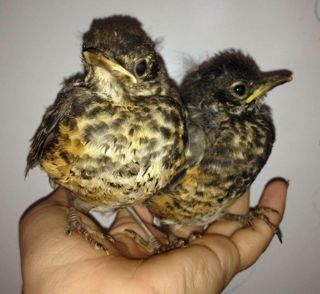
There’s a “conflict resolution” section on the Animal Help Now App. And Ame tells us that many bird conservation groups push for people to keep their cats inside or have outside play areas for their cat to help the local small wildlife. For example, if you find a baby kitten, you want to go with kitten formula, not milk.Īs another note, cats in the wild do hunt wildlife. And babies should only have milk from their own species. In addition, milk as a whole should only be reserved for babies. The fat globules of cow’s milk are very large and can be hard to digest for other animals. But never leave food out at night!Īme warned that animals should never be given cow’s milk. Ame said that she feels every animal deserves a chance, and if the animal is thin and not getting enough to eat, it’s good to offer food. I asked about giving the animal food and milk. Many areas also have a rescue group that will help the animal find a new home. Many cities have Trap – Neuter – Release programs that will take the animal, spay/neuter, give any vaccines that are needed, and release back to the wild. They can tell us what resources are available. If we’re not familiar with options near us, the best thing is to get in touch with our local Humane Society. The answer to this depends on the programs available in our local area. Pinterest "Wildlife Rehabilitation" Community: They also serve as a licensed wildlife rehabilitation center. They do this through education programs and outreach about alternative energy, organic gardening, and wildlife conservation.
Cincinnati wild bird rescue how to#
She farms, and she tells us that she loves that she lives at the end of a dirt gravel road, with no one in site!įox Run Environmental Education Center’s mission is to teach people how to live more environmentally friendly lives. She has a creek that runs through her property with woods on both sides. It’s a beautiful spot, in a valley of rolling hills and fresh air. She paints a picture of her home in Falmouth for us. She went to college in Cincinnati and knew quickly that the loud sounds of the city were not for her. She describes herself as a country girl through and through. She has graduate degrees in education and environmental science and has worked in traditional schools as well as non-profits.Īme runs a non profit called Fox Run Environmental Education Center in Falmouth, Kentucky where she lives. Raised on a traditional Kentucky farm, Ame has always loved animals and became a vegetarian at 16 when she refused to participate in processing on the farm. We go through multiple “I Found an Animal, What Should I Do?” scenarios in our interview. I seriously think we could get a college degree by just reading her blog posts! Ame even encourages everyone to study more and become a wildlife rehabilitator if interested. She shares 3 clear simple ideas that we can use to actually help with wildlife rescue ourselves.


She not only teaches us the science behind their physical bodies and environments, but helps us understand emotion and how each animal is actually a lot like us. She brings a humane angle to learning about animals such as opossums, raccoons, even snakes.

I believe that comes through in everything she does. She lives off the grid, teaching people about wildlife, alternative energy, organic gardening, medicinal herbs, and the list goes on.Īme’s background is in both education and environmental science. She runs Fox Run Environmental Education Center, where she rehabilitates animals to be released back into the wild. Ame Vanorio joins me from Falmouth, Kentucky to talk all about wildlife rescue.


 0 kommentar(er)
0 kommentar(er)
